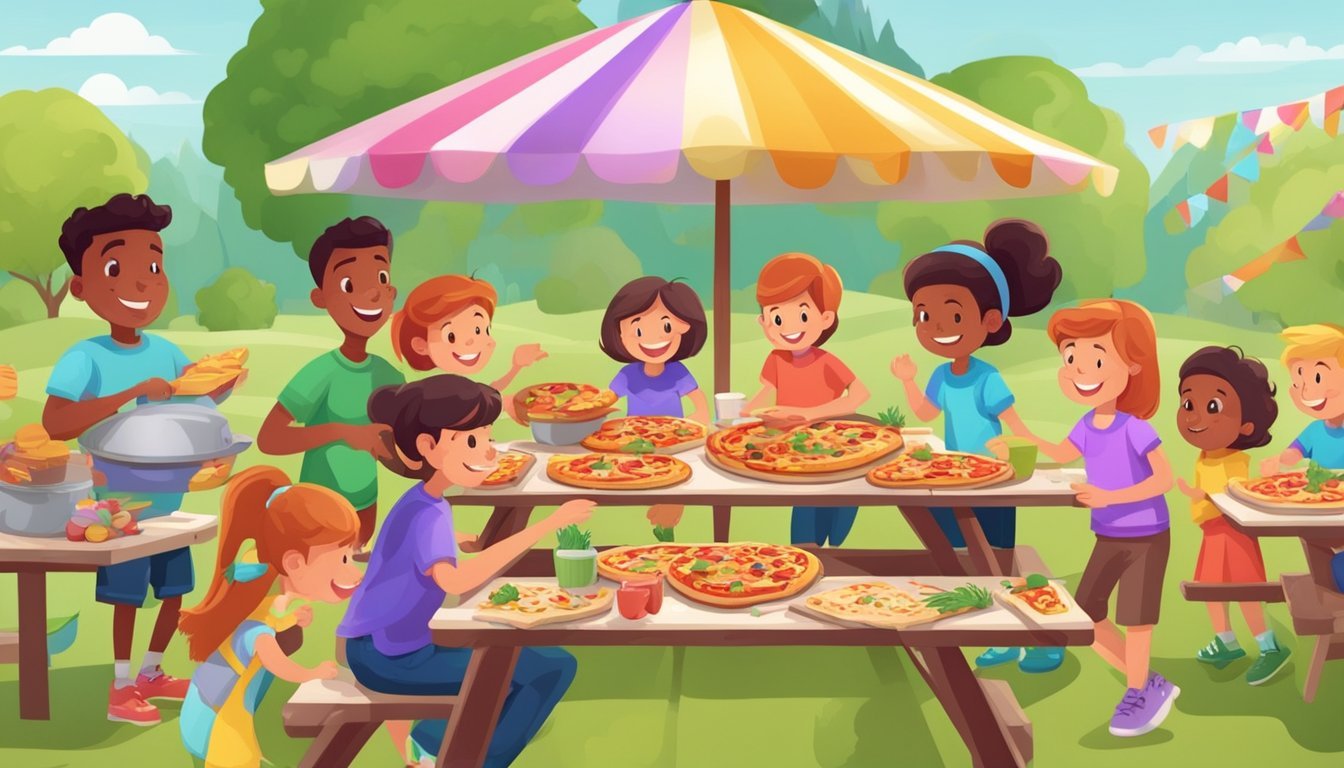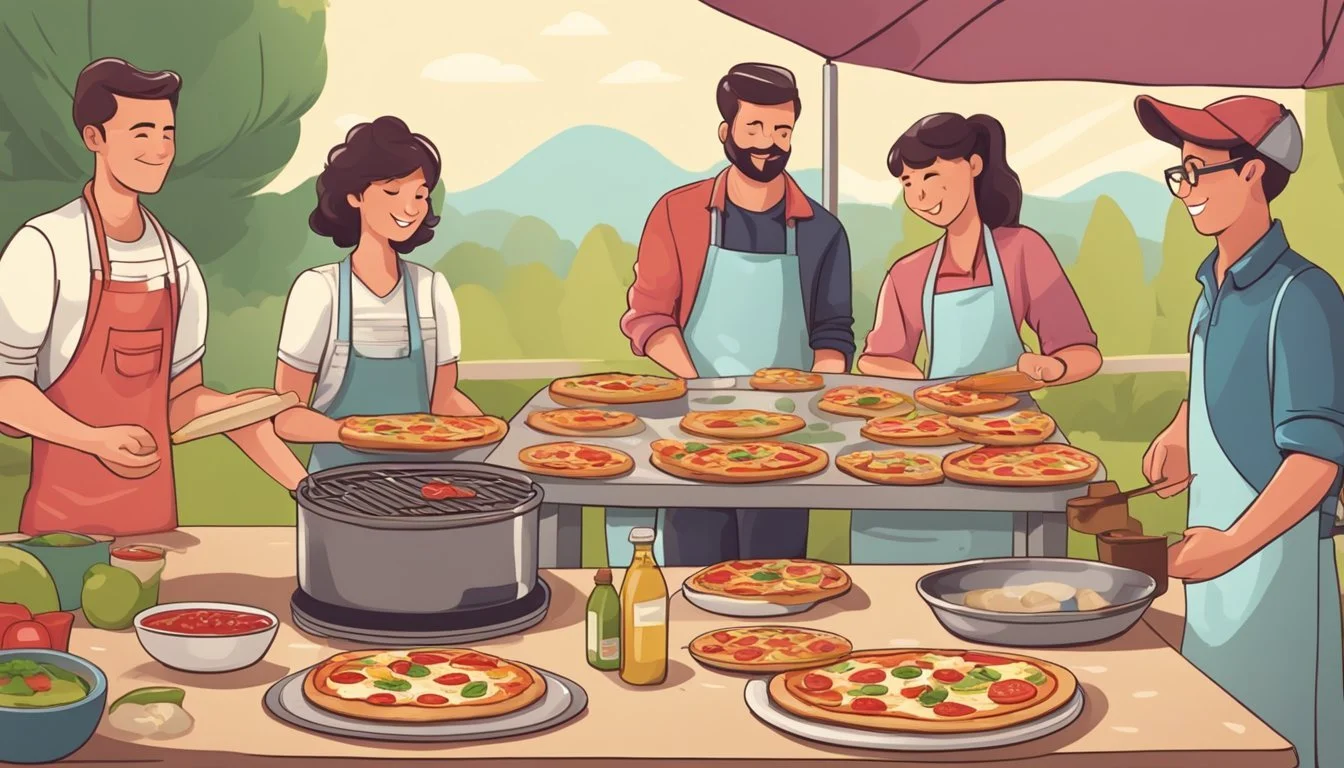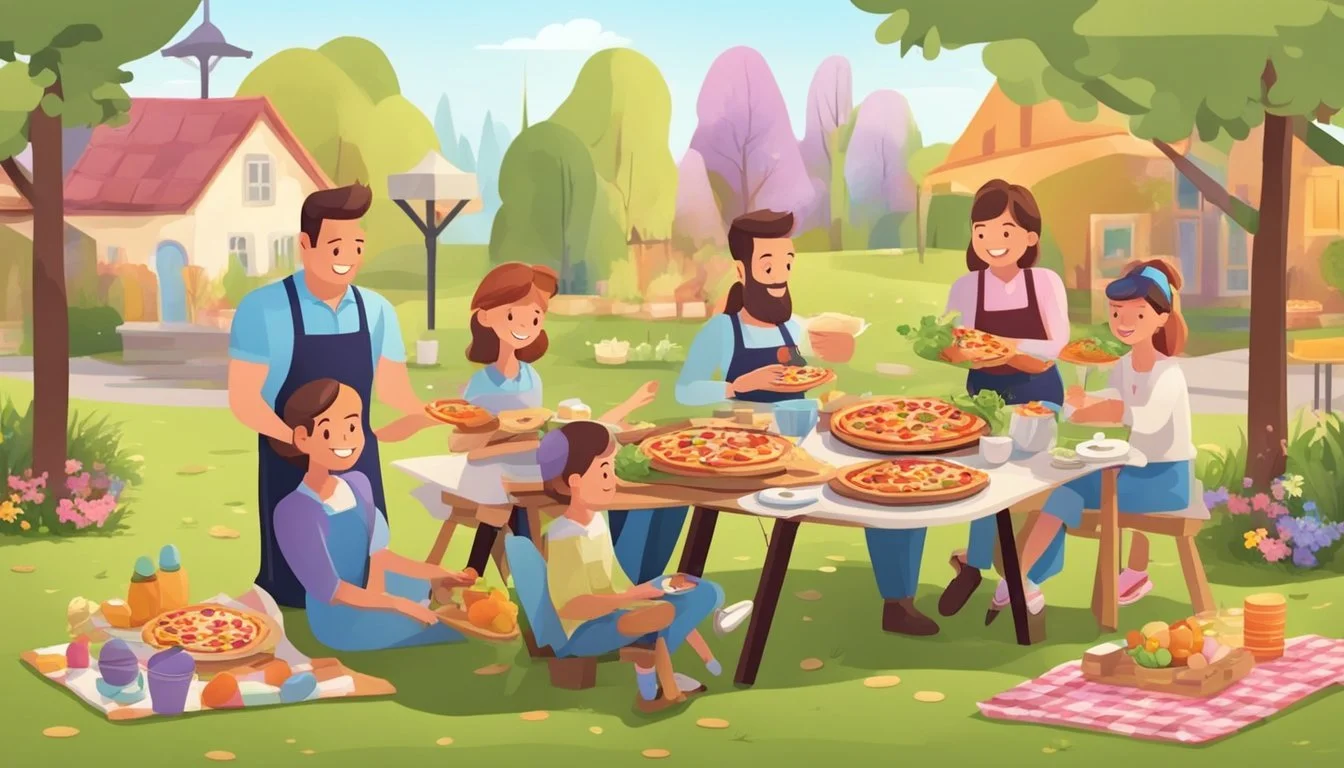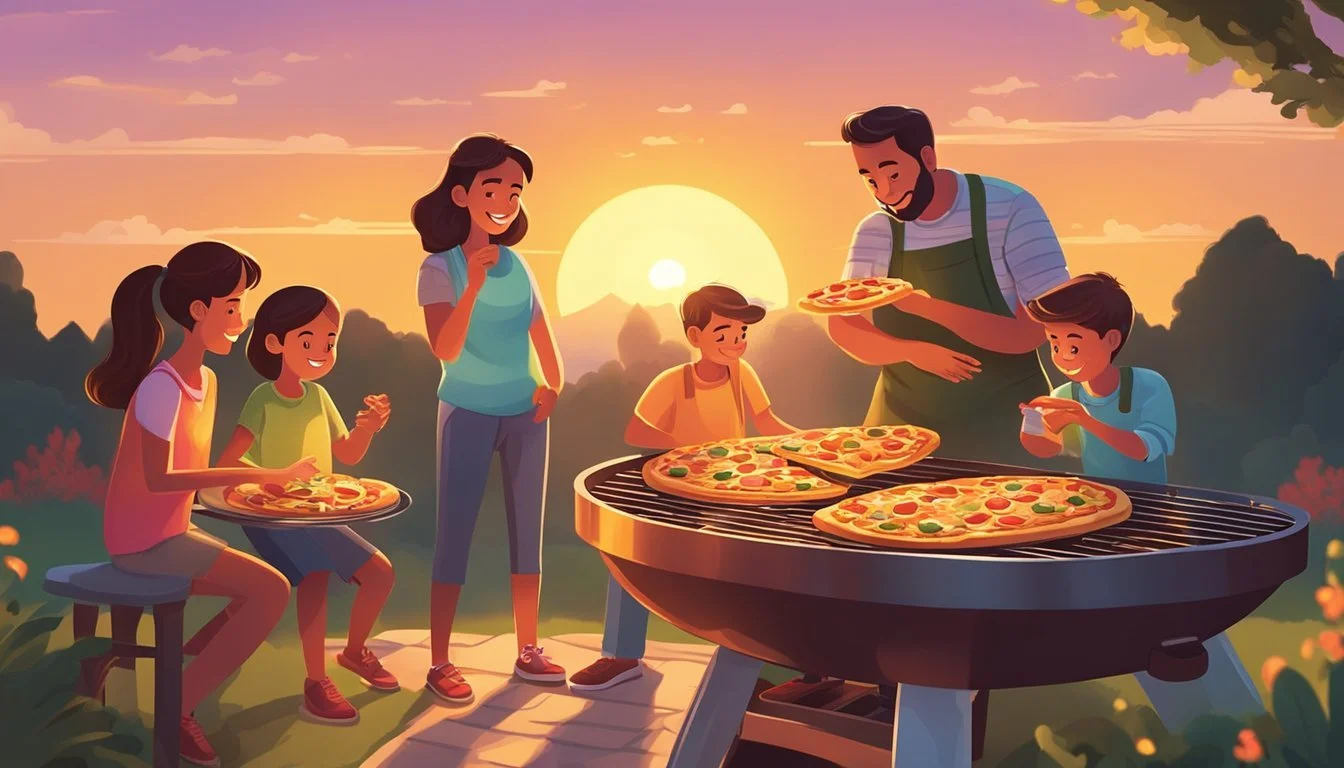Easter Grilled Pizza
A Family-Friendly Activity for Springtime Fun
Easter is not only a holiday celebrated with traditional activities such as egg hunts and Sunday brunches (What wine goes well with brunch?), but it also provides an excellent opportunity for families to gather and engage in creative and enjoyable endeavors. As spring breathes new life into the surroundings, what better way to enjoy the holiday than with an activity that incorporates the essence of the season? Taking the festive feast outdoors, grilled pizza (What wine goes well with pizza?) becomes an exciting culinary venture that is both family-friendly and perfectly aligned with the Easter spirit.
Grilled pizza offers a unique twist to traditional Easter meals, inviting family members of all ages to participate in the pizza-making process. This hands-on activity encourages collaboration and creativity, allowing each person to tailor their slice with their favorite toppings. As the aroma of freshly grilled pizza dough mingles with the scent of blooming flowers, families can enjoy the pleasant weather and the joyous atmosphere that Easter and spring collectively bring.
Additionally, crafting pizzas on the grill is not just a way to prepare food; it is an interactive experience that can create lasting memories. As families select their preferred toppings and watch as their pizzas cook to perfection, they learn about timing and temperature management – skills that are beneficial for any aspiring home cook. While waiting for their creations to come off the grill, family members can engage in light-hearted conversations and enjoy the shared moments of togetherness that Easter is all about.
The Origins and Significance of Easter
Easter symbolizes the resurrection of Jesus Christ as told in the Christian Bible, and it is a central event in the Christian liturgical year, with a rich blend of religious and cultural traditions.
Religious Roots and Holy Week
Easter is the principal festival of the Christian church celebrating the Resurrection of Jesus Christ on the third day following His Crucifixion, as detailed in the New Testament of the Bible. This commemoration concludes Holy Week, which begins with Palm Sunday, includes Maundy Thursday and Good Friday – the day of remembrance of Christ's death. The precise origins of Easter date back to the second century, though it is likely to have been celebrated earlier.
Easter Traditions and Symbols
Easter Eggs: Symbolic of new life and resurrection, Easter eggs were traditionally dyed red to represent the blood of Christ. The custom has evolved, and now eggs are often painted in various colors and patterns.
Easter Bunny: Originating from pre-Christian fertility lore, the Easter Bunny has become a symbol of Easter in the United States and other countries, bringing eggs as gifts to children.
Easter traditions vary globally but often include church services, the distribution and consumption of Easter eggs, and the participation of secular characters such as the Easter Bunny, particularly in the United States and other Western nations. These customs merge the religious significance of Easter with cultural practices that have been absorbed and adapted over centuries.
Getting Ready for the Grill
Grilling pizza is a fantastic way to bring a delicious twist to a family Easter activity. This section will guide you through selecting the proper equipment and understanding the preheating process to ensure your grilled pizza is a success.
Choosing the Right Equipment
The choice of equipment is crucial for grilling pizza. A pizza stone is highly recommended as it evenly distributes heat and gives the pizza crust that perfect crispness. However, one can also use a baking sheet or heavy-duty parchment paper as an alternative, especially for transferring the pizza to the grill. The grill itself should be sturdy and clean, with grates brushed lightly with oil to prevent sticking.
Preheating Essentials
Before cooking, the grill must reach the optimal temperature. Preheat the grill to a high temperature, typically between 475 to 500 degrees Fahrenheit. This high heat mimics the environment of a traditional pizza oven and helps in achieving a well-cooked crust. It's important to let the pizza stone or baking sheet heat up with the grill; this avoids thermal shock to the stone and ensures it is at the right temperature when the pizza is placed on it. Keep the lid closed to maintain an even temperature throughout the preheating phase.
Making the Perfect Pizza Dough
Perfect pizza dough is the foundation of any great grilled Easter pizza, combining a chewy texture with a depth of flavor that enhances the toppings. The process of making homemade dough is simple and allows for customization according to taste.
Ingredients for Homemade Dough
The ideal pizza dough starts with only a few basic ingredients, each playing a vital role in the dough's consistency and flavor:
Water: It activates the yeast and binds the dough.
Yeast: This is the leavening agent that helps the dough rise and adds a distinct taste.
Flour: High-gluten flour like bread flour contributes to a chewy crust.
Salt: It strengthens the gluten structure and adds flavor.
Olive Oil: A high-quality olive oil not only enriches the flavor but also tenderizes the dough, making it easier to handle.
For one batch of pizza dough, the following quantities are suggested:
Quantity Ingredient 1 cup Warm Water (110°F - 115°F) 1 tbsp Active Dry Yeast 2 ½ cups Bread Flour 1 tsp Salt 2 tbsp Olive Oil
Kneading and Resting Techniques
Kneading is crucial as it develops the gluten, providing the dough with elasticity and structure. Start by mixing the dry ingredients, then gradually add the wet ingredients until a shaggy dough forms.
The dough should be kneaded on a lightly floured surface until it's smooth and slightly tacky, typically around 7-10 minutes by hand. If using a stand mixer, a dough hook attachment can be employed on a low speed for approximately 5-7 minutes.
After kneading, the dough must rest to allow the yeast to ferment, which imparts flavor and creates gas bubbles that make the dough rise. The dough should be placed in an oiled bowl, covered, and left in a warm place until it doubles in size, usually between 1 and 2 hours. This resting time is crucial for developing the texture and flavor of the pizza dough.
Once rested, the dough is ready to be rolled out and placed on the grill. It should be thin enough to cook quickly but thick enough to hold toppings. The high heat of the grill will impart a delightful smokiness and a crisp crust, elevating the homemade pizza dough to new heights for a festive Easter meal.
Selecting Toppings and Sauce
When planning an Easter Grilled Pizza, the right balance of toppings and sauce not only complements the smoky flavor from the grill but also brings a festive touch to the table. With both classic options and creative Easter-inspired additions, one can cater to all taste buds and make the pizza-making an engaging experience for the family.
Classic Toppings
Traditional toppings like pepperoni, olives, and cheese are staples for a reason—they provide familiar flavors that are beloved by many. For cheese, opt for a good meltability factor, such as mozzarella or provolone, to ensure that it binds the toppings together deliciously. Here's a simple list for selecting classic toppings:
Cheese: Mozzarella, Provolone, Parmesan
Meats: Pepperoni, Sausage, Ham
Vegetables: Olives, Bell Peppers, Mushrooms
For pizza sauce, a robust tomato-based sauce serves as a tangy and sweet foundation that complements these toppings well. One can never go wrong with a classic homemade or high-quality store-bought pizza sauce, seasoned with herbs like oregano and basil.
Creative Easter-Inspired Additions
Easter calls for a splash of creativity with toppings that bring a springtime vibe to the pizza. One could consider adding colorful vegetables or themed toppings to match the Easter spirit. Here are a few festive ideas:
Vegetables: Asparagus (how long does asparagus last?), Baby Spinach, Artichokes (What wine goes well with artichokes?)
Cheese: Ricotta (shaped into small Easter "eggs"), Feta
Special: Hard-boiled eggs (sliced), Smoked Salmon
For a creative turn on the sauce, one might consider a ricotta and herb spread as a base, or even a pesto to give an herby, green twist to the Easter theme. These variations offer a fresh approach to the classic pizza and can be a delightful way to celebrate the holiday while enjoying the outdoors.
Assembling and Grilling the Pizza
When making grilled pizza, the key to success lies in the preparation of toppings and mastering the grill's heat. Proper layering results in a harmony of flavors, while the grilling technique ensures a perfectly cooked, crispy crust.
Layering for Flavor
Layering toppings on your pizza creates a depth of flavor that's both satisfying and balanced. Begin with a base of a robust sauce, be it classic tomato or a fusion of BBQ and tomato paste, spread evenly but sparingly to avoid sogginess. Follow with a generous sprinkle of cheese, allowing for ample coverage. Grilled pizza benefits from a mixture of cheeses such as mozzarella for meltiness and a smoked provolone or gouda for an added depth. Crown your pizza with a variety of pre-grilled or sautéed vegetables, and if desired, cooked meats. Herbs and spices should be sprinkled last to infuse aroma directly into the cheese and toppings.
Mastering the Grilling Technique
The grilling technique for pizza mirrors an oven's baking process yet requires more attention. Preheat your grill to a high temperature, aiming for around 400 degrees to emulate a pizza oven. Slide the pizza onto the grill using a cornmeal-dusted peel, reducing sticking. To ensure even cooking, rotate the pizza after a couple of minutes. Once the crust develops golden brown grill marks, it's time to apply the toppings. Close the lid to create a sealed environment, which helps melt the cheese uniformly. After 3-5 minutes, or once the cheese is melted and toppings are warmed through, the pizza is ready to be served. Using tongs and a spatula, transfer the pizza to a cutting board, and allow it to cool for a short period before slicing. Grilled pizza provides an enticing smoky flavor and crisp texture that an oven simply cannot replicate.
Creative Easter Activities for the Family
Easter is the perfect opportunity for families to embrace creativity and enjoy a range of festive activities. From organizing a themed egg hunt to engaging in various games and crafts, there's something for every family member to enjoy.
Organizing an Egg Hunt
An Easter egg hunt is a quintessential activity that can be customized for different age groups. Families can hide candy-filled eggs around their backyard or inside the house in case of inclement weather. For a unique twist, consider a glow-in-the-dark egg hunt for older kids, using eggs that light up, or for a competitive edge, introduce a golden egg with a special prize.
Items Needed for Egg Hunt:
Plastic Easter eggs
Candy or small toys for filling
Glow sticks (for a nighttime hunt)
A special golden egg
Fun and Games
Incorporate traditional games with an Easter spin to ramp up the excitement. An egg and spoon race and a sack race add a physical dimension to the festivities, while Easter bingo and charades with Easter-themed prompts keep everyone engaged and laughing.
Easter Game Ideas:
Egg and Spoon Race: Balance an egg on a spoon and race to the finish line without dropping it.
Sack Race: Jump to the finish line in a sack for old-fashioned fun.
Easter Bingo: Use Easter images and symbols for a seasonal twist on the classic game.
Charades: Act out book or movie titles for others to guess, all with an Easter theme.
Easter Crafts and Decorating
Creative expression can be enriched through Easter crafts and decorating activities. Sidewalk chalk can be used to draw Easter-themed murals, while families can engage in crafting decorations like watercolor crosses or bunny garlands to adorn the home.
Decorating and Crafting Ideas:
Sidewalk Chalk Art: Create colorful Easter drawings on the pavement.
Homemade Decor: Make watercolor crosses, bunny garlands, or paper-plate Easter baskets.
Each activity offers families the opportunity to make new memories and celebrate the Easter season with joy and creativity.
Hosting an Easter Feast
Easter Sunday offers a perfect opportunity to bring families together around a feast that's both special and interactive. Grilled pizza lends a creative twist to the traditional Easter brunch or dinner, allowing hosts to serve up a meal that encourages family participation and minimizes post-feast leftovers.
Serving Grilled Pizza
Grilled pizza is a novel way for hosts to serve up a customizable Easter feast. Guests can choose their toppings, which makes it a family-friendly activity that engages everyone, from children to adults. Here's how one can streamline the process:
Prepare the Dough: Before guests arrive, have pizza dough ready— either homemade or store-bought.
Set Up Topping Stations: Create an area with a variety of toppings, including cheeses, meats, vegetables, and a few unique options for a festive touch.
Grill in Batches: Depending on the grill size, one can cook multiple pizzas at a time. Ensure each pizza is grilled for about 5-7 minutes or until the crust is crispy and the cheese is melted.
Complementary Side Dishes and Dessert
To complement the main attraction, hosts can offer a variety of side dishes and a dessert that embody the spirit of Easter, while keeping the preparation simple and streamlined.
Side Dishes:
Grilled Asparagus (What wine goes well with grilled asparagus?) : Tossed with olive oil, salt, and pepper and grilled to perfection.
Spring Salad: A mix of fresh greens, seasonal vegetables, nuts, and a light vinaigrette.
Dessert:
Simple Fruit Salad: A blend of seasonal fruits, which can be prepped in advance.
Easter Cupcakes: Cupcakes decorated with pastel colors and Easter-themed toppings add a sweet ending to the meal.
These additions ensure a well-rounded menu that allows the host to accommodate various dietary preferences and adds an elegant but straightforward touch to the Easter feast.
Seasonal Considerations
When planning an Easter grilled pizza event, the choice of setting often depends on the time of the year and the prevailing weather conditions. Spring weather can be perfect for grilling outdoors due to its mild temperatures, while summer offers longer daylight hours.
Ideal Weather for Grilling Outdoors
The ideal weather for an outdoor grilling session is a clear spring day with minimal wind. Temperatures should be comfortable, typically ranging in the mid-60s to high-70s Fahrenheit. One should also consider the following:
Sunlight: Aim for a time of day when the sunlight is not too intense, such as late afternoon or early evening.
Wind Speed: A gentle breeze is agreeable, but strong winds can make grilling difficult.
Indoor Alternatives for Unpredictable Climate
In case of unpredictable climates like sudden spring showers or an unexpected drop in temperatures, one should be prepared with indoor alternatives:
Grill Pans: Utilize heavy-duty cast-iron grill pans for stovetop cooking that can mimic outdoor grills.
Ovens with Grill Functions: Some ovens come equipped with grill functions that can effectively roast pizza, offering a decent alternative to outdoor grilling.
Post-Easter Reflection and Pastimes
Easter weekend provides ample opportunities for families to engage in activities that foster togetherness and create lasting memories. Reflecting on spiritual growth and spending quality time with loved ones are central to these post-holiday moments.
Church and Spiritual Reflection
Individuals often go to church on Easter Sunday to commemorate the holiday's spiritual significance. Post-Easter, many continue their spiritual journey, reflecting on the messages received during sermons and integrating them into daily life. Churches might organize events that provide a contemplative space for attendees to meditate on their spiritual experiences from Easter weekend.
Activities may include:
Prayer groups
Devotional studies
Community service
Family Traditions and Quality Time
Families typically place a high value on quality time during the Easter holiday, extending the joy of togetherness into the following weeks. They might cultivate family-friendly projects, such as planting tulips or other spring flowers. This not only beautifies their home environment but also acts as a metaphor for growth and renewal.
Traditional pastimes:
Outdoor picnics with Easter leftovers, featuring items like Peeps.
Crafting with Easter-themed materials, embracing pastels and spring motifs.
Conclusion
Easter offers the perfect opportunity for families to engage in festive activities that are both enjoyable and participatory. One activity that embodies this spirit is making grilled pizza, an innovative spin on a beloved homemade dish. The act of preparing and cooking pizza outdoors provides a simple way to spend quality time together and celebrates the holiday in a non-traditional yet delightful manner.
Grilled pizza serves not only as a meal but also as a collaborative holiday activity. Each family member can contribute to the creation of the pizza, from selecting toppings to stretching the dough. The communal experience of cooking over the grill can foster connections and create lasting memories.
Benefits of Grilled Pizza on Easter:
Simplicity: Simplistic process, adaptable to all cooking levels.
Engagement: Inclusive for all ages, ensuring everyone partakes.
Quality Time: Promotes togetherness and cooperative cooking.
Holiday Twist: Adds a unique and festive touch to Easter celebrations.
By embracing the ease and adaptability of grilled pizza, families can create a fresh Easter tradition that is sure to be relished by all. The combination of homemade authenticity and the distinct flavor imparted by the grill marks Easter as a time for both culinary discovery and the nurturing of family bonds.










